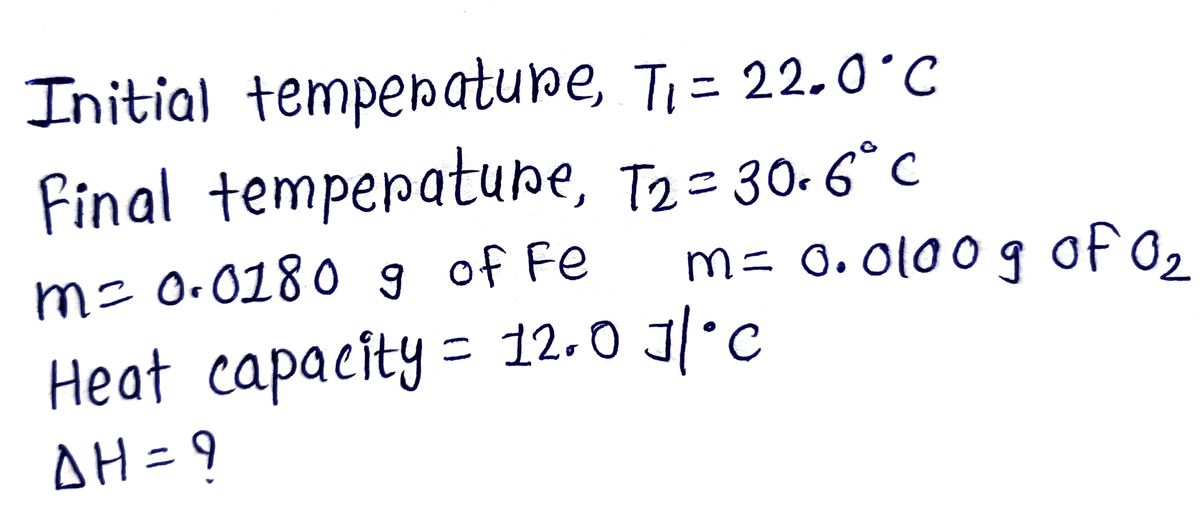8. The reaction below was carried out in a calorimeter initially at 22.0 °C. After 0.0180 g of iron reacted with 0.0100 g oxygen, the final temperature of the calorimeter was 30.6°C. If the heat capacity of the entire calorimeter and solution was 12.0 J/°C, what is the AH of the reaction in units of kJ? (note the units on the calorimeter do not include mass) 4Fe(s) + 30₂(g) 2Fe₂O3(s) AH₁x = ?
Thermochemistry
Thermochemistry can be considered as a branch of thermodynamics that deals with the connections between warmth, work, and various types of energy, formed because of different synthetic and actual cycles. Thermochemistry describes the energy changes that occur as a result of reactions or chemical changes in a substance.
Exergonic Reaction
The term exergonic is derived from the Greek word in which ‘ergon’ means work and exergonic means ‘work outside’. Exergonic reactions releases work energy. Exergonic reactions are different from exothermic reactions, the one that releases only heat energy during the course of the reaction. So, exothermic reaction is one type of exergonic reaction. Exergonic reaction releases work energy in different forms like heat, light or sound. For example, a glow stick releases light making that an exergonic reaction and not an exothermic reaction since no heat is released. Even endothermic reactions at very high temperature are exergonic.
![**Calorimetry Reaction Problem**
**Problem Statement:**
The reaction below was carried out in a calorimeter initially at 22.0 °C. After 0.0180 g of iron reacted with 0.0100 g of oxygen, the final temperature of the calorimeter was 30.6 °C. If the heat capacity of the entire calorimeter and solution was 12.0 J/°C, what is the ΔH of the reaction in units of kJ? (Note the units on the calorimeter do not include mass.)
\[ 4\text{Fe}(s) + 3\text{O}_2(g) \rightarrow 2\text{Fe}_2\text{O}_3(s) \quad \Delta H_{\text{rxn}} = ? \]](/v2/_next/image?url=https%3A%2F%2Fcontent.bartleby.com%2Fqna-images%2Fquestion%2F5a0011f3-a94e-4ba4-97f0-d2315dab4566%2F525448db-f7bd-4a31-97ac-26102d077eb6%2Fywnskjs_processed.jpeg&w=3840&q=75)

Step by step
Solved in 3 steps with 3 images









